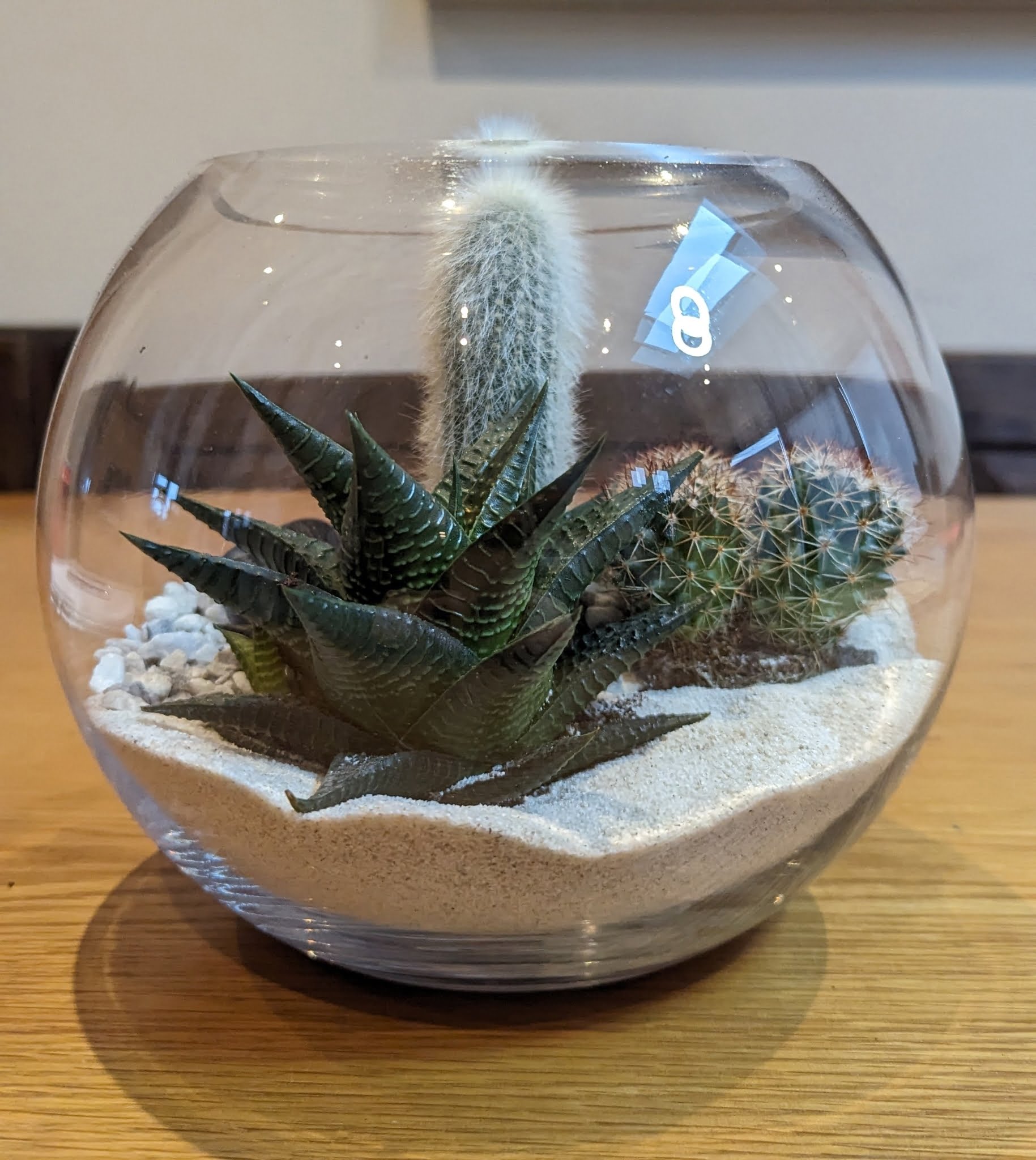
The Fascinating Science Behind Closed Terrariums

The Fascinating Science Behind Closed Terrariums: A Deep Dive
At Blue Squid Creation, we’re not just about creating beautiful terrariums; we’re about unraveling the mysteries and science that make these self-sustaining ecosystems possible. Closed terrariums are more than just decorative items; they are living laboratories that demonstrate complex ecological processes in a jar. Let’s embark on a journey to understand the captivating science behind closed terrariums and how they work.
The Miniature Ecosystem
A closed terrarium is essentially a miniature ecosystem enclosed in glass. This ecosystem comprises plants, soil, rocks, and microorganisms, all working together in harmony. The glass enclosure creates a unique environment where the terrarium can recycle water and nutrients, mimicking the natural cycles found in the broader environment.
The Water Cycle in a Jar
One of the most remarkable aspects of a closed terrarium is its ability to simulate the Earth’s water cycle on a micro-scale. Here’s how it works:
- Evaporation: Water from the soil and plants evaporates in the warm environment of the terrarium.
- Condensation: The water vapor rises and condenses on the walls of the glass container, forming droplets.
- Precipitation: These droplets eventually become heavy enough to fall back to the soil, watering the plants.
This cycle repeats indefinitely, creating a self-sufficient hydration system that requires minimal external intervention.
Photosynthesis and Respiration
Closed terrariums also showcase the processes of photosynthesis and respiration. During the day, plants absorb carbon dioxide and, using light and water, convert it into oxygen and glucose, a process known as photosynthesis. At night, the process reverses, with plants consuming oxygen and releasing carbon dioxide during respiration. This natural exchange maintains the atmospheric balance within the terrarium, ensuring the survival of plant life.
The Role of Microorganisms
Microorganisms play a crucial role in the terrarium’s ecosystem, breaking down dead organic matter into nutrients that plants can absorb. This decomposition process is vital for recycling nutrients and maintaining the health of the terrarium’s environment. These microorganisms, including bacteria and fungi, are the unsung heroes that keep the cycle of life turning within the terrarium.
Temperature and Light: The External Factors
While a closed terrarium is largely self-sustaining, external factors like temperature and light play a significant role in its health and stability. The right amount of light, not direct sunlight, is crucial for photosynthesis. Meanwhile, temperature affects the rate of evaporation and condensation, influencing the water cycle within the terrarium.
The Educational Value
Beyond their beauty, closed terrariums serve as dynamic educational tools, offering hands-on lessons in ecology, botany, and environmental science. They allow observers to witness firsthand the delicate balances and cycles that sustain life, providing insights into the broader natural world.
Conclusion
The science behind closed terrariums is a testament to the intricate and interconnected processes that sustain life on our planet. At Blue Squid Creation, we celebrate these living ecosystems not only for their beauty but for their ability to teach us about the resilience and complexity of nature. By understanding the science that powers these miniature worlds, we gain a deeper appreciation for the natural processes that sustain life on Eart.
Related Posts


Watering Your Closed Terrarium

